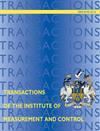五种温度系数叠加的高拱坝位移预测组合模型
IF 1.7
4区 计算机科学
Q3 AUTOMATION & CONTROL SYSTEMS
Transactions of the Institute of Measurement and Control
Pub Date : 2024-07-27
DOI:10.1177/01423312241262229
引用次数: 0
摘要
拱坝的静力不确定特性凸显了温度变形效应,因此对温度变形效应进行精确建模是提高位移监测模型性能的关键问题。本文比较了季节谐函数、分段前平均气温、气温滞后修正系数、主成分和基于形状特征聚类的大坝实测温度主成分等五种温度变形建模因子的因果解释能力和预测精度。在此基础上,建立了以上述五个因果模型为子模型的组合预测模型。组合过程采用动态互信息系数、随机森林和支持向量机三种方法。对锦屏一拱坝的研究结果表明,基于形状特征聚类的温度主成分能显著提高位移监测模型的准确性和适应性,其中均方根误差平均降低了 52%。组合预测模型能有效考虑不同类型温度变形建模因子的优势。与水力-季节-时间模型和最佳子模型相比,基于支持向量机的组合模型的预测精度分别提高了 54% 和 28%。本文章由计算机程序翻译,如有差异,请以英文原文为准。
A combination model for displacement prediction of high arch dams stacking five kinds of temperature factors
The statically indeterminate characteristics of arch dams highlight the temperature deformation effect, making accurate modelling of this effect a key issue in improving the performance of displacement monitoring models. In this paper, causal interpretation ability and prediction accuracy of five kinds of temperature deformation modelling factors, including seasonal harmonic function, segmented average previous air temperature, air temperature hysteresis correction factor, principal components and shape feature clustering-based principal components of measured dam temperatures, are compared. On this basis, a combination prediction model is established using the above five causal models as submodels. The combination process is conducted by three methods of dynamic mutual information coefficient, random forest and support vector machine. Research results of the Jinping-I arch dam show that the shape feature clustering-based temperature principal components can significantly improve the accuracy and adaptability of displacement monitoring models, in which the root mean square error decreases with an average rate of 52%. The combination prediction model can effectively take the advantages of different kinds of temperature deformation modelling factors into account. Compared with the hydraulic-seasonal-time model and the best submodel, prediction accuracy of the support vector machine-based combination model is improved with an average rate of 54% and 28%, respectively.
求助全文
通过发布文献求助,成功后即可免费获取论文全文。
去求助
来源期刊
CiteScore
4.10
自引率
16.70%
发文量
203
审稿时长
3.4 months
期刊介绍:
Transactions of the Institute of Measurement and Control is a fully peer-reviewed international journal. The journal covers all areas of applications in instrumentation and control. Its scope encompasses cutting-edge research and development, education and industrial applications.

 求助内容:
求助内容: 应助结果提醒方式:
应助结果提醒方式:


